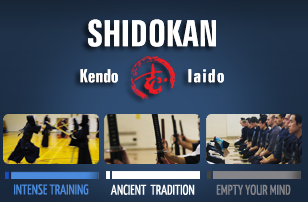Code of conduct 
We are glad that you have decided to learn the martial art of kendo and/or Iaido. There are some important notes that we would like to communicate to you in order to help with the transition into our club. Here are some of the key points:
The purpose of Shidokan is to teach Japanese swordsmanship, its physical techniques and spirit, through the practice of kendo and iaido. The practice of kendo and iaido is instructed and conducted solely by Sensei(s) the instructors: Mr. Santoso Hanitijo, Mr Robert Miller, Mr Dean Jolly & Senior students appointed by them.
All students must trust this leadership, and heed the teachings and instructions no matter what without confrontation or reply, as it would be performed in a Militia Chain of Command . Students must respect each other and must not cause any personal discord. Students must not bring disgrace to Shidokan or to its fellow members. Any one who goes against the above mentioned rules would be the subject of suspension or expulsion from the dojo.
Proper etiquette must always be displayed in a friendly and respectable manner towards Sensei (instructor) , Sempai (senior students) and every other member of the club. Pejorative terms such as 'insults', 'racial slurs', 'swear words' and any other type of physical or verbal aggression will not be tolerated at the dojo.
-
Punctuality : Please be ready 15 minutes ahead of the practice start time. This is to ensure that there is enough time to change and to help with the practice area clean-up.
-
What To Wear:
For the first several lessons, please wear loose clothing such as a plain T-shirt and shorts or appropriate athletic pants. Kendo requires sliding footwork technique so pants that are too long will not be appropriate (make sure the pants don't drag around the floor). You will be expected to purchase a kendo uniform by the end of the first semester.
-
What Not To Wear :
On entering the dojo, please remove all earthly things including footwear (shoes, slippers, and socks) head-wear (caps, hats or hair ornaments), sunglasses, watches, necklaces, bracelets, earrings, rings, piercings and all other jewelry. All kind of earrings/piercings could cause serious potential inuries.
-
Shinai (Kendo) / Bokuto (Iaido) : New students are allowed to borrow the kendo club’s shinai or bokuto for the first two weeks of practice. Afterwards, it is expected that each student will purchase their own shinai or bokuto. This is your “sword” so it is important to have and to take care of your own. The kendo club does sell the shinai, but the student may purchase it from anywhere. However, please confirm what size shinai should be purchased if you decide to buy your own from somewhere else.
-
Proper Manners/Etiquette : The dojo is a place of respect; for the dojo space itself, your fellow students and for yourself. Please bow into the dojo space when entering or leaving. Please greet other students and sensei (instructors) clearly and politely. The shinai is your “sword” and as such, it must also be treated respectfully and not as a walking stick or a bat.
When can you register? 
Shidokan offers Kendo and Iaido training at the Concordia Univeristy (Loyola Campus).
Iaido classes are also offered at the John Abbott College.
At Concordia U.
- New students with no previous KENDO and/or IAIDO experience are accepted to start during the first weeks in January, May and September.
John Abbott College
- Iaido at John Abbott College is on-going throughout the year. Training is given by Shidokan Senior Instructor Dean Jolly. New students may come by anytime.
* No Kendo training is offered at John Abbot College.
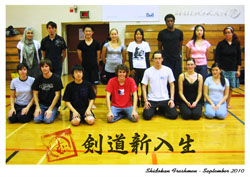
Students with kendo or Iaido experience who wish to join the club, may join us any time during the year.
About the Fees 
At Concordia the registration process and fees are done through the Loyola campus front office (located at the same place of the Dojo). There are fees for students and for public in general so everyone can join Shidokan. Information about the fees.
-
Concordia U. - Loyola
Classes are open to everyone over 18*
- Kendo fees per semester: $55 (student) / $75 (public)
- Iaido fees per semester: $35 (student) / $55 (public)
*With some exceptions -
John Abbott College
Iaido classes are open to everyone. Please contact us to know about the fees at John Abbott College. (tkkim@hotmail.com)
FAQ
I'm not sure if I want to join, Do I have to register before being able to try it?- During the first week of training (Kendo and Iaido) you may come and try our practice to see if it's what you are looking for without registering. Shidokan is a non-profit organization, the fees are intended to cover the rental and maintenance of our facilities.
I want to start Kendo, but I can only attend once per week, Is that permitted?
-
It's not mandatory to attend to every kendo class, Although for the student's progress we recommend to attend as many times as possible.
If the student can attend only once per week, we would suggest some 'homework' drills to complement his/her training.
- Senior students are expected to train 3 times per week.
Where do Iaido classes take place ?
- Iaido classes are offered in two places: Concordia University (Loyola Campus main gym) in Notre-Dame-de-Grâce (Montreal), and John Abbott College in Sainte-Anne-de-Bellevue.
Where do Kendo classes take place ?
-
Kendo classes are offered only at Concordia University (Loyola Campus main gym) in Notre-Dame-de-Grâce, Montreal.
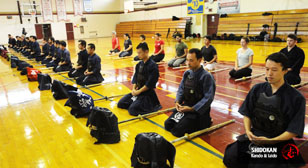
I have no experience with swordsmanship or fencing: should I pursue Iaido or Kendo? Does one naturally lead to the other?
-
Kendo and Iaido are very much related. They share a common root.
The majority of high ranking kendoka practice iaido, and vice versa.
In the beginning it does not matter which one you start with.
Many of our club members, although still inexperienced, practice both.
We find one complements the other and help in the understanding of both.
* Kendo is the sparring part of Japanese swordmanship. You will train in full contact with your oponent.
* Iaido is the sword manipulation part of Japanese swordmanship. We learn a set of forms (kata), practiced alone against imaginary opponents, and repeat over and over again. At the very begining we use a simple wooden sword (bokuto) and then as we progress we use an unsharpened imitation sword (iaito). We learn how to hold, draw, cut, clean, resheath, etc. High ranking students may use a real sharpened sword (Only 3rd Dan and up with Sensei's permission).
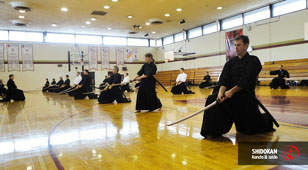
May I watch the practice before joining?
- Yes. Visitors are welcome to observe at any practice. Experienced practicioners from other clubs are welcome to join our practice at any time.
What do I wear to my first practice?
- Loose fitting sweats or a track suit are fine. Judo or Karate uniforms also work well if you have them. For safety reasons, jewellery should not be worn.
Do I need equipment?
-
Yes. You will need a bamboo sword (shinai) for Kendo and a wooden replica sword (Bokuto or bokken) for Iaido. It is advised to purchase your own in advance.
* It's recomended for Iaido student to get a pair of Knee pads since many of the Kata (form) start from seiza (sitting on your knees)
* Iaido students are advised to get a Iaito (unsharpened sword imitation) to be able to practice acurately every movement.
When do I need to get my own uniform and armor?
-
You can buy the kendo uniform (Keikogi and Hakama) after you've decided you're going to stick with it. You won't be permitted to wear armor (bogu) until you've been practicing for six months to a year, depending on ability and practice frequency.
For Iaido your Kendogi and hakama can be used as well. If prefered you may also purchase a IaidoGi (usually in full black)
Where can I buy equipment?
- Shinai are generally available through the club. Uniforms, bokuto (bokken) and armour (bogu) are generally purchased on-line by the members themselves. The club's instructors can recommend reputable suppliers.
How much does equipment cost?
-
A basic bamboo shinai generally costs $30-$40 (plus shipping) and should last a beginner 8 to 12 months. A basic wooden Bokken will cost $25-$40 (plus shipping) and will last forever. A good quality KendoGi (uniform) can start at $70. Good quality Bogu (Armor) start at $400.
* At the begining of your training you will only need a shinai and lots of patience. (Kendo)
* At the begining of your training you will only need a bokuto, knee pads and lots of patience. (Iaido)
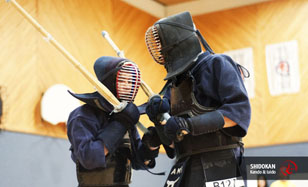
Can I borrow equipment?
- A limited number of sets of armour (bogu) are owned by the club. They are available for members to use at no extra charge. The club has limited numer of shinai (bamboo swords) or bokken (wooden swords) for loan.
What is a beginner class like?
- For the first six to eight months you will learn warm up exercises, footwork, how to swing the sword properly, and execute basic strikes. This is done under the close supervision of an instructor or senior member. You may practice striking senior members wearing armour, but you will not be struck yourself. For the most part, a shinai held at head or wrist level will be used as a target to practice the basic strikes. Kendo is done in bare feet, and you will likely get blisters at some point. There is little aerobic exercise value in Kendo at this stage. Before you can participate in full contact sparring, you need to have the basics down cold.
What is an advanced class like?
- After the first six to eight months you will put on armour and practice the strikes and thrusts in full contact practice with an opponent. The first half of practice will typically be drills, often finished up with intense aerobic conditioning drills. The second half typically consists of free practice sparring with other (more advanced) members of the club.
